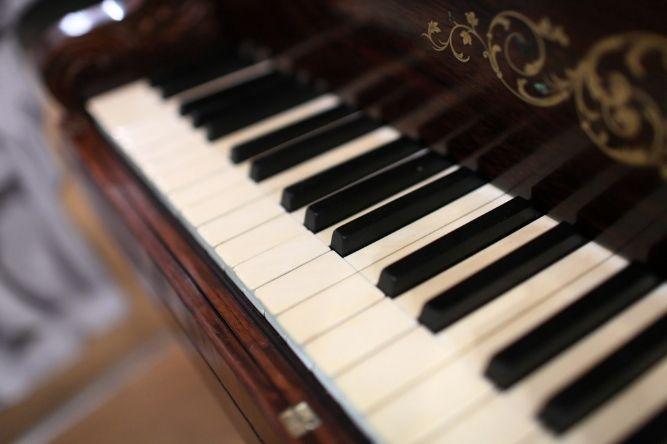For most music lovers, the idea of playing an instrument can be exciting but difficult. There are many options to choose from, but starting on the piano is an excellent choice for a first instrument. While there are advantages to be had with the piano, you might run into some confusion about where to start. There are differences to factor in when choosing an acoustic piano or a digital/electric keyboard. Here are the perks of each side to help in your curiosities:
What Is an Acoustic Piano?
Acoustic pianos are made of a wooden or metal exterior that features hammers and steel strings built within them. The piano has weighted keys connected by the steel strings to the wooden hammers so that when you press a key, the hammer strikes, creating a vibration, which creates sound.
What Is a Digital Piano?
Digital pianos are not acoustic instruments. When the keys are pressed, the sounds are produced electronically. The speakers will play back high-quality recordings from an acoustic piano and/or other instruments, like violins and drums.
Sound
Quality
The sound quality and options will vary between these two instruments, considering what options you like when it comes to the possibilities of sound.
- An acoustic piano produces sounds that are amplified physically. According to Liberty Park Music, it gives you a more authentic sound with better control over the articulation of the musical notes.
- A digital piano will copy the sounds an acoustic can make, as well as a variety of other sounds like the organ, synthesizers, sound effects, etc. The keyboard is installed with digital files that have different options for sounds, but you will lose the authentic sound of an acoustic.
- You get volume options when sticking with a digital keyboard, as well as an output to plug in headphones. This way, you can practice in private or use the volume knob to decrease the sounds.
- Some keyboards have a recording function, so you can record what you play. This is beneficial for anyone learning how to play piano and convenient for online music lessons.
Feel
There will be a difference in feel when it comes down to playing these instruments; acoustic pianos vibrate.
Touch
- An acoustic piano has weighted keys which require a little more finger strength than a keyboard.
- The strength and movement of your fingers on a piano will determine what tone of sound you will get, giving a different range of sound on a key.
- An electric piano may lack touch sensitivity when it comes to playing, which is why some manufacturers have created weighted keys to mimic the same feel of an acoustic.
- A standard piano has 88 keys, as do many keyboards, but not all keyboards feature 88 keys due to the size or model you choose. You will want to make sure you have 72 keys at the very least to ensure you have the ability to play many popular piano songs.
Pedals
Acoustic pianos have foot pedals to alter the instrument’s tone, whereas electric pianos might not.
Sustain Pedal
The right pedal on a piano is also referred to as the damper pedal. The player has the ability to string notes and chords together in a smoother fashion, effective for transitioning between notes.
Sostenuto Pedal
Located next to the damper pedal and will work as a selective damper. When pressed, the sostenuto rod will engage and hold up the dampers that have been raised when the keys are pressed. This sustains notes that are depressed when the pedal is engaged.
Una Corda Pedal
Located on the left side next to the sostenuto pedal and is referred to as the soft pedal. This thins out the tone of the piano, as it shifts the keyboard and action to the right so that the hammers do not strike all the strings. By doing so, the hammers will strike a string with a different portion of the head, resulting in a softer sound.
Digital Pedals
Most keyboards will not come with pedals, but some models will include them. For those without, an input jack can be found on the digital keyboard where you can plug in a sustain pedal that you can purchase at any local music store. This will be the only pedal you can add to your keyboard unless you find a digital upright piano that comes with the three-pedal arrangement.
Size/Portability
Pianos are always a good choice, but most musicians will learn quickly that the size and portability of your instrument will play heavily in which kind of piano you buy. A full-size piano can reach a weight of 454 kg (1000 lbs.) or more, while smaller-scale pianos, like an upright, can still be 227 kg (500 lbs.). This type of piano makes for an interesting and challenging move, not to mention the deciding factor of where you would place it in your home.
Digital keyboards are much more lightweight and portable in comparison, making for easy mobility. These keyboards can come with a portable stand, which help for quick setups. Portability is good for any travelling musicians who want a light load.
Maintenance
Like anything you love, it is best to ensure your instrument is well taken care of. Acoustics, as well as digital or electronic pianos, need some TLC too.
Cleaning
- Steinway recommends disinfecting your piano keys with over-the-counter hydrogen peroxide, as it is safe for piano keys. Make sure to use a cotton pad or soft cloth when doing so, followed by drying with a towel.
- An acoustic piano has more surface area to cover when wiping it down. When using a clean cloth and minimal warm water, make sure you don’t let any liquid in between the keys, as it can cause swelling within the piano.
- A keyboard requires the same treatment but with less surface area, making for a quicker clean.
Tuning
- You will have to know how to tune your acoustic piano, as it will require tuning every six months or so, depending on how often it’s played.
- Some musicians may need the assistance of a professional when it comes time to tune the instrument.
- Seasonal changes, temperature, and humidity can contribute to your piano being out of tune.
- Keyboards do not require any tuning, although the quality of their speakers can go out over a period of time.
Price Difference
When choosing your piano, the topic of the price will surely be a concern for you. When looking at an acoustic piano, they can be thousands of dollars. A digital piano, on the other hand, is much more affordable, hanging in the low hundreds, although higher-end models can be much pricier.
Regardless of what decision you make when looking at the differences between keyboard and piano, online keyboard lessons are always beneficial to anyone looking to learn. The techniques you’ll learn will help you excel in your musical ventures and assist you when it comes time to making the decision: Keyboard or piano.



